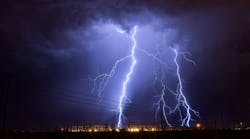Long Island is my home and a place I cherish. It is this deep-seated affection for my community along with my professional interests that have kept me active on the issues of energy and sustainability – a key ingredient in safeguarding the fine quality of life we all enjoy from Merrick to Manorhaven to Montauk.
New York Governor Cuomo’s draft 2014 State Energy Plan focuses on a number of positive initiatives that, if successful, will be good for all Long Islanders – and all New Yorkers. These include the focus on improving energy affordability, promoting private sector engagement and financing, and working to bolster our electric grid.
However, there are a number of points within the plan that are debatable and require further consideration.
First, having been deeply involved in the industry for decades, I am reasonably sure that demand for electricity will ultimately increase despite the recent flat trend. In 2009, New York put forth a goal of reducing electricity consumption by 15 percent by 2015. Yet since that time, consumption has grown by 2.5 percent, at a time the economy has been soft. Based on this, the state should be more realistic about the potential of energy efficiency initiatives and openly accept that more generating resources will be required.
Second, there has been a troublesome trend among New York policy makers to trumpet the potential of relying more and more on out-of-state and even out-of-country power resources. We simply cannot achieve more affordable power in New York in the long run if we do not increase the amount of in-state sources of power.
At present, efforts are under way to expand access to natural gas in New York, especially on Long Island. This is encouraging because infrastructure constraints have caused the price of natural gas to significantly increase recently.
Of particular importance is keeping our existing power sources – especially our state’s six nuclear power plants – online. The ongoing campaign to close Indian Point – a major asset to New York’s power supply – is deeply concerning because Indian Point provides 2,000 Megawatts of reliable, affordable, base-load energy, and serves as a foundation of our electric grid. Long Island lost a major opportunity to have an affordable energy system when it prematurely shut the Shoreham nuclear facility. This saddled Long Islanders with $6 billion in debt and imposed some of the highest electric rates in the nation which persist to this day.
I very much support the goal of working to unleash the power of private sector energy financing. However, there must be a level playing field for this to be effective. The state government cannot selectively subsidize some projects.
We should learn from Germany’s mistakes – the country’s policy of heavy subsidies for intermittent power sources, specifically wind and solar, have driven energy costs through the roof. A recent report from IHS, a leading global energy research firm, found that Germany’s rising electricity costs are making the country less competitive internationally, and also found that the country will need to rely more heavily on fossil fuel sources.
While wind and solar can and should have a significant role in our energy supply, they are inadequate alone to meet our energy needs. Until effective, utility-scale energy storage becomes available (which may be many decades down the road) we will either need base-load energy sources like coal, natural gas, nuclear and hydro, or we will need to have all intermittent power sources backed up by spinning reserves of natural gas power plants. The latter isn’t cost effective in the long run, to say the least, nor is it efficient and environmentally friendly.
Along these lines, before the state commits $1 billion to the Green Bank, we should clearly define how these funds will be spent and study how these costs will impact and benefit ratepayers.
As the final plan is constructed, I urge a review of the big picture of our energy needs and how we can meet our growing energy needs while also supporting the state’s economy.
And I encourage a final plan that builds on many of the positive initiatives that are outlined in the draft report, while also modifying those proposals that do not.


